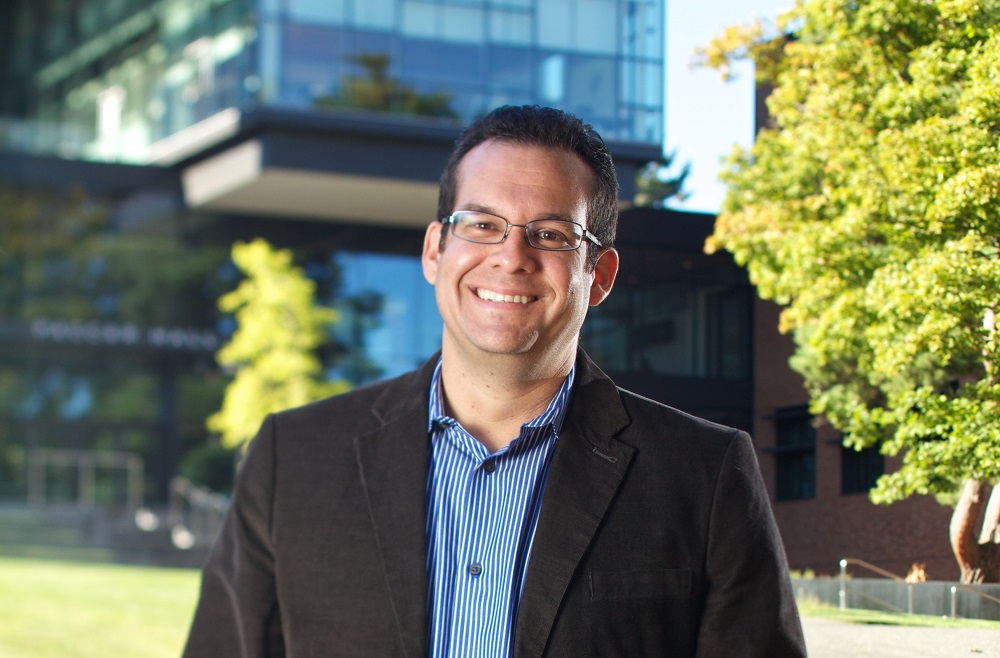AMZN-G Scholar: Wagner’s operations expertise helps Amazon deliver
The COVID-19 pandemic has devastated some companies and disrupted most others.
For Amazon, though, it has ignited an unabated boom in business, from cloud computing to enterprise hosting to digital streaming. Most visibly, the Seattle-based tech and retail giant has raced to keep up with the tsunami of orders from quarantining customers who either can’t or won’t go into physical stores to purchase necessities.
So, the timing was pretty optimal for Michael Wagner to become an Amazon Scholar last summer.
Wagner is an associate professor of operations management at the University of Washington Foster School. But in a high-profile bit of moonlighting over the past several months, he has been modeling the best way to efficiently utilize Amazon’s legion of contract delivery drivers.
The experience has been rewarding for both parties.
“I’ve been very impressed with the agility of Amazon to react to the pandemic,” Wagner says. “It’s been amazing to see.”
A-team scholars
The Amazon Scholars program, established in 2018, employs leading academics to apply their research methods toward solving the company’s large-scale technical challenges, while allowing them to continue to teach and conduct research at their universities.
It’s extremely valuable to experience how things are actually done at a company that’s probably the world leader in supply chain management and machine learning and optimization. Amazon is the state of the art, and the path from research project to production is incredibly fast.” – Michael Wagner
The 100 or so senior academics in the program bring expertise in artificial intelligence, avionics, computer vision, data science, economics, machine learning, natural language processing, quantum computing, robotics… and optimization, which is the particular domain of Wagner, a Neal and Jan Dempsey Endowed Faculty Fellow at Foster.
Goldilocks gigs
It was a particular work of optimization by Wagner that caught Amazon’s eye.
His new paper, entitled “Crowdsourcing Last-Mile Deliveries,” co-authored with recent Foster PhD Program grad Soraya “Nadia” Fatehi (PhD 2020) and forthcoming at the journal Manufacturing & Service Operations Management, proposes a model for the most efficient way to get “last-mile” deliveries to customers inside guaranteed windows of time.
The study was motivated by Amazon Flex, the program that crowdsources gig workers (non-professional drivers, in this case) to make local deliveries more inexpensively than professional delivery services or in-house delivery staff could. Walmart and Target are also experimenting with this method of “last-mile” delivery.
The practice, Wagner says, presents an incredibly complex logistical challenge: to minimize the cost of delivering packages—factoring in traffic patterns, on-site delivery times, driver availability, seasonality and trends in customer orders—while keeping good drivers happy enough to keep coming back for more work.
 Wagner and Fatehi built a robust scheduling model for assigning the optimal amount of work to contractors. The idea is to achieve a “Goldilocks zone” of the just right volume of deliveries to leave drivers neither over-stressed nor under-stressed, allowing them to reach customers on schedule without experiencing undo idle time (which leads to lower earnings and eventual attrition).
Wagner and Fatehi built a robust scheduling model for assigning the optimal amount of work to contractors. The idea is to achieve a “Goldilocks zone” of the just right volume of deliveries to leave drivers neither over-stressed nor under-stressed, allowing them to reach customers on schedule without experiencing undo idle time (which leads to lower earnings and eventual attrition).
Theory to action
Such considerations are very real for Amazon’s Flex division, which crowdsources fast deliveries through Whole Foods, Amazon Fresh and Prime Same Day. Each business has experienced a spike in orders since the pandemic began. And each competes for contract couriers against rival gig-economy players such as Uber, Postmates, DoorDash and Instacart.
“You want to minimize costs, of course,” Wagner says. “But these are gig workers, not employees. You can’t tell them what to do. You have to keep them happy. You want Flex to be the gig of choice because there is so much work in the pandemic.”
So, working as an Amazon Scholar full-time through summer quarter and part-time since, Wagner customized an optimization model for Flex using real-time, real-world data.
Now that the holiday rush has passed, Amazon is working to deploy his model.
Thrill of delivery
Compared to one-off academic research projects or even consulting work he had done, Wagner’s association with Amazon has felt pretty comprehensive. Having developed the Flex optimization model over the summer and fall, he is now working with Amazon software developers to put it into production and fine-tune its efficiency—a rarity for a scholar accustomed to working alone with theoretical models and limited data sets.
“This gives you a much higher degree of ownership,” Wagner says, “because there is a pipeline, the time frame is longer term, and you feel like you’re part of a team. The camaraderie is fantastic.”
Plus, the stakes are real. And high.
But Wagner is getting as much out of his Amazon relationship as he’s giving to it. For one, the company encourages academic publication of the cutting-edge work produced by its Amazon Scholars. “They want to be a leader in scientific research and innovation,” Wagner notes.
Learning how a research model gets implemented to create actual value for customers is satisfying and very eye-opening.” – Michael Wagner
He also says he benefits from the deep-pocket resources of one of the world’s leading companies, where “the amounts of data available are astronomical.”
Most of all, Wagner has appreciated the golden chance to see how the models he creates and concepts he teaches are applied by the best in the business.
“It’s extremely valuable to experience how things are actually done at a company that’s probably the world leader in supply chain management and machine learning and optimization,” Wagner says. “Amazon is the state of the art, and the path from research project to production is incredibly fast.”
Next up
Wagner is working on a two-year contract as an Amazon Scholar, and will rejoin the company full-time again over the summer of 2021. He expects to move on to new optimization problems, but is also relishing the chance to help implement his existing model in Amazon Flex.
“Learning how a research model gets implemented to create actual value for customers is satisfying and very eye-opening,” he says.
It’s a lesson that should make his future research and teaching at the Foster School even more effective.

